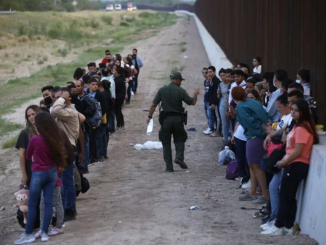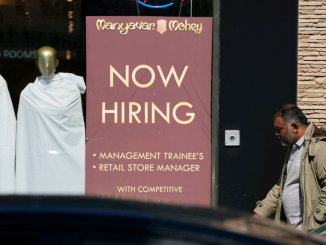
The United States is expected to be grappling with more than 8 million asylum seekers and migrants who will have crossed over the southern border by September.
The staggering figure represents a 167 percent surge in five years and underscores the challenges faced by what is both an underfunded and antiquated immigration system.
The vast majority of the 8 million are now free to roam US streets, including 2 million ‘high-priority’ cases of career criminals seeking asylum.
{snip}
The backlog has left millions of migrants who are currently residing in the U.S., unsure of whether they will be permitted to stay or simply be deported.
Migrants who cross the border may often be forced to wait several years for a decision to be made in their applications. In the meantime, they have been released to American streets.
Recent data suggests the backlog has only swelled during President Joe Biden’s term in part reflecting the difficulties his administration has faced in addressing the unprecedented influx of migrants, mainly from Central and South America.
At the end of fiscal year 2023 on September 30, more than 6 million people were recorded on what officials term the ‘non-detained docket.’
Government projections, as communicated in Homeland Security documents sent to Congress, suggest the number will have risen to 8 million by October 1.
{snip}
The majority are not being held in limited available detention space and instead are free to roam.
Immigration and Customs Enforcement currently has only 40,000 detention beds.
In the backlog, about 2 million of the individuals in the backlog are deemed high-priority cases, primarily comprising of those who have received deportation orders to their home countries.
It also includes migrants who have criminal records or who are facing pending criminal charges.
Further complicating matters, the federal immigration agencies including Customs and Border Protection and ICE find themselves facing challenges because of partisan disputes in Congress, which have hindered the allocation of necessary resources.
The Biden administration has sought additional funding to address the border situation, but the requests have been met with resistance.
A bipartisan border deal that had been in the making for months was quashed by Republicans, who were influenced by Trump’s stance on the issue.
Trump has highlighted the Biden Administration’s ineffectiveness at dealing with the problem as a campaign issue.
Last month, the Senate failed to approve a bipartisan bill that would have addressed a $700 million budget deficit for the agency – the largest in history. The failed bill would have allocated $7.6 billion specifically for ICE.
{snip}
Meanwhile, thousands of individuals in desperate circumstances continue to cross the border daily.
Following the failure of the bipartisan border deal, there is now speculation on whether President Biden will decide to embrace policies resembling those implemented by Trump to curb illegal border crossings.
Either way, immigration experts, officials, and congressional sources agree that any policies that will be effective in addressing illegal border crossings will require substantial investments in personnel and other resources.
* Original Article:
https://www.dailymail.co.uk/news/article-13152975/amp/More-8MILLION-asylum-seekers-soon-live-167-increase-five-years-Bidens-lax-policies-continue-allow-flood-migrants-southern-border.html?ito=smartnews


